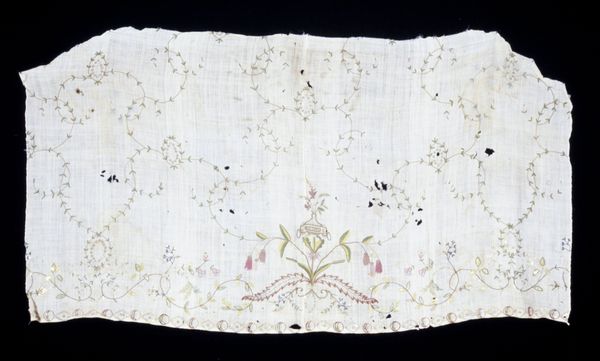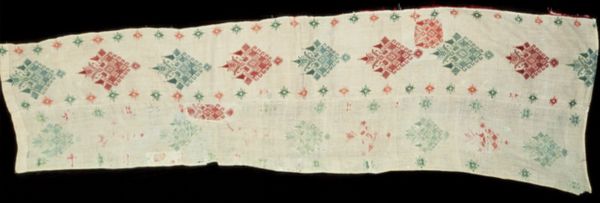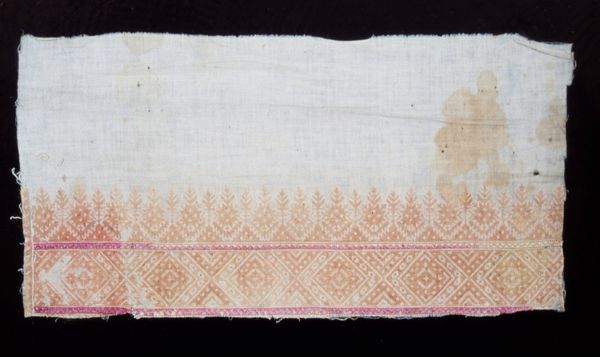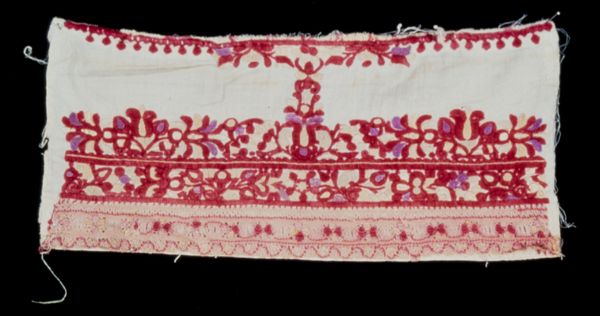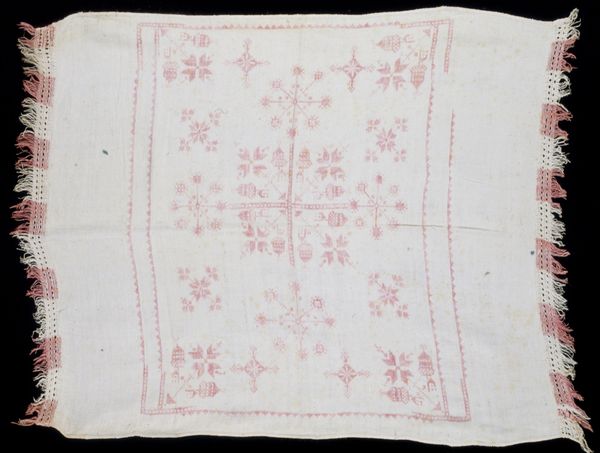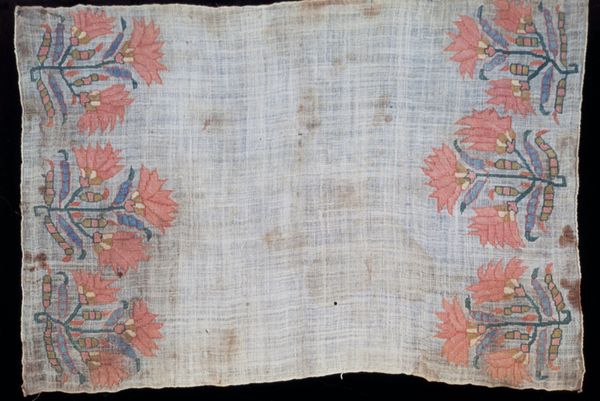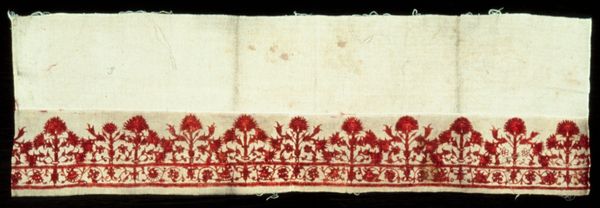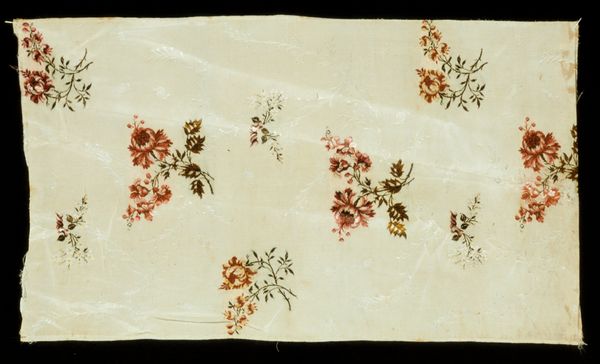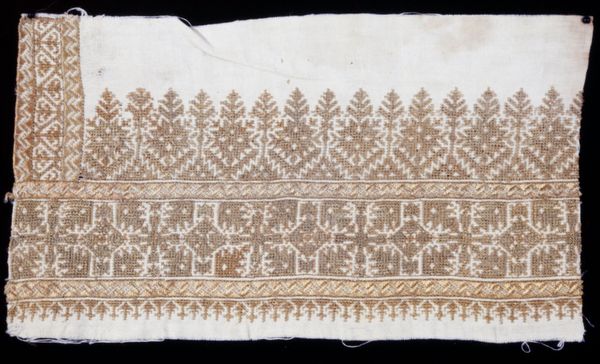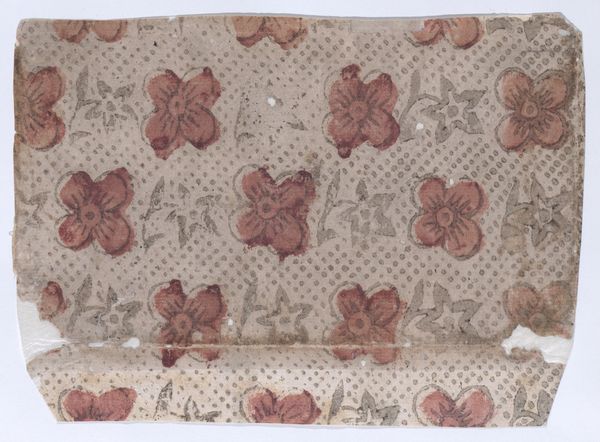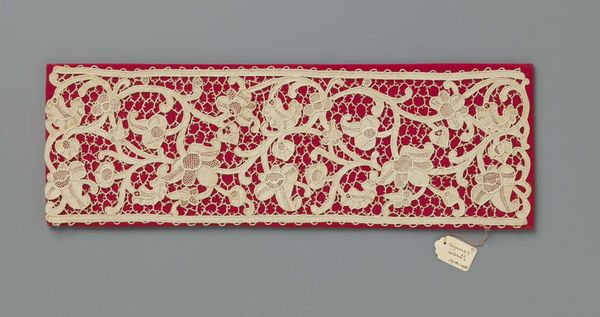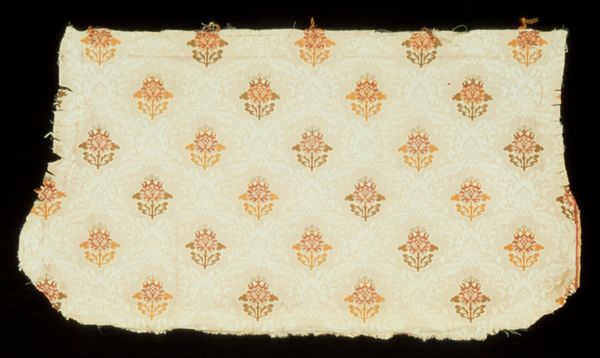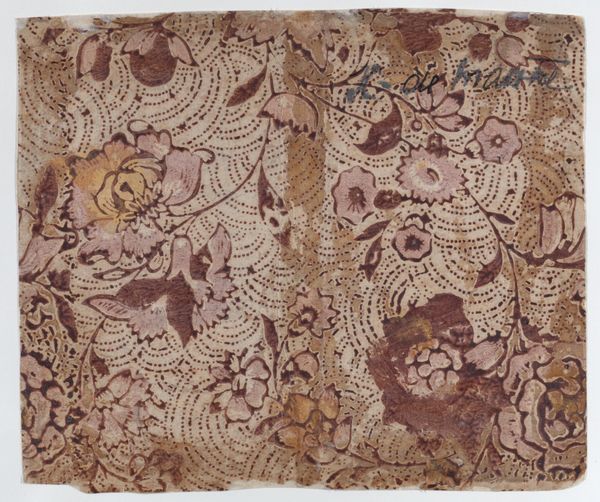
print, textile, woodblock-print
# print
#
landscape
#
textile
#
figuration
#
linocut print
#
woodblock-print
#
france
#
genre-painting
#
imprinted textile
#
mixed medium
#
rococo
Dimensions: 23 1/4 x 15 1/8 in. (59.06 x 38.4 cm)
Copyright: Public Domain
Curator: I find this textile fragment quite charming; it's titled "The Little Drinker," dating back to around 1770, and you can find it here at the Minneapolis Institute of Art. Editor: Charming is one word! I’m immediately struck by the repeated motif. The pale red figure pops against the off-white, creating a cheerful albeit somewhat faded rhythm. It’s quite decorative. Curator: Indeed. Considering its era, its Rococo style connects it with other luxury goods manufactured and consumed at the time, usually depicting idyllic themes marketed towards the elite. We have here, not an isolated artistic statement, but a symptom of widespread industrial and social circumstances. Editor: Precisely, its semiotic significance cannot be missed, its colors alone speak volumes! Pink—rose, blush, salmon— was not a color of destitution but flamboyance! Curator: Absolutely. It exemplifies consumer culture's intricate relationship with social identity. A piece of textile of this kind speaks of global trade routes and colonialism—necessary structures to ensure consistent supplies of material goods as such. How available and reproducible was the raw material at the time of this particular item's manufacture? That is the key! Editor: And then consider its construction—likely a woodblock or similar resist printing method—every element of production holds meaning. Its formal and symbolic elements give meaning not just to a time period, but, perhaps, to the desires and hopes that this "The Little Drinker" stood for. Curator: Agreed. The wear and tear visible is the perfect embodiment of my approach. These imperfections do nothing but solidify the argument I posit on the transient nature of consumer objects...they’re all going to turn into what this already is: a memory of another time! Editor: That is what it is. And though, with all of that history pressing in, "The Little Drinker" perseveres and retains that sweetness. What’s history but a collection of semiotic cues anyway, material proof that our minds attempt to formalize the human existence within the limitations of language? Curator: A beautiful notion! And so this little remnant prompts a larger contemplation of human experience across social stratification, art production, consumption... Editor: Indeed! It provides a perfect little space for analysis, both of structure and labor.
Comments
No comments
Be the first to comment and join the conversation on the ultimate creative platform.
